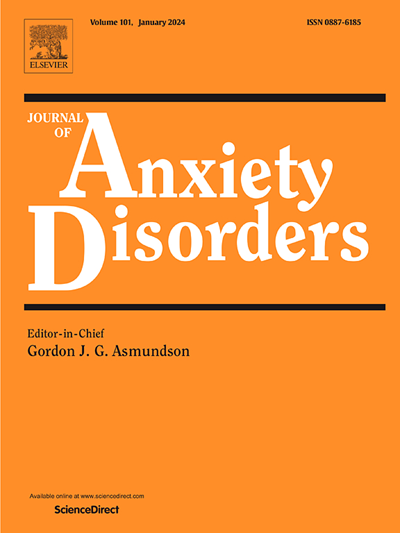Psychometric evaluation of the Posttraumatic Stress Disorder Checklist for DSM-5 in daily surveys: An item response theory and longitudinal measurement invariance analysis
IF 4.5
2区 医学
Q1 PSYCHIATRY
引用次数: 0
Abstract
The Posttraumatic Stress Disorder (PTSD) Checklist for the DSM-5 (PCL-5) has demonstrated excellent psychometric qualities across cross-sectional studies, yet the scale’s performance in intensive longitudinal studies is less known. Using data from the PCL-5 administered daily for 9 days, we (a) conducted item analysis of the PCL-5 using the graded response model to examine item characteristics (thresholds and discrimination parameters) and (b) examined differential item functioning (DIF) to evaluate whether the PCL-5 measured the PTSD latent trait identically across daily surveys (i.e., longitudinal measurement invariance). Methodologically, 256 trauma-exposed university students (Mage = 21.01 ± 4.24; 85.8 % women; 41.0 % probable PTSD) completed the 20-item PCL-5 for 9 consecutive days. Across days, results indicated lower but acceptable discrimination for PCL-5 items 8 (traumatic amnesia), 16 (reckless or self-destructive behaviors), and 17 (hypervigilance). Further, 14 % of participants exhibited person misfit at least once across the 9 days. DIF analysis indicated that Item 2 (nightmares) exhibited DIF across days indicating potential bias; however, the effect sizes for DIF were negligible. In conclusion, the results broadly provide psychometric support for using the 20-item PCL-5 in intensive longitudinal studies. Future replication of study results across diverse and clinical populations could help to further strengthen these findings.
DSM-5创伤后应激障碍日常问卷的心理测量评估:项目反应理论和纵向测量不变性分析
DSM-5 (PCL-5)中的创伤后应激障碍(PTSD)检查表在横断面研究中显示了出色的心理测量质量,但在密集的纵向研究中,该量表的表现却鲜为人知。使用连续9天每天给药的PCL-5的数据,我们(a)使用分级反应模型对PCL-5进行项目分析,以检查项目特征(阈值和区分参数);(b)检查差异项目功能(DIF),以评估PCL-5在每天的调查中是否测量了相同的PTSD潜在特征(即纵向测量不变性)。方法:256名创伤暴露大学生(Mage = 21.01 ± 4.24;女性85.8% %;41.0% %可能有PTSD)连续9天完成20项PCL-5。结果显示,PCL-5项目8(创伤性遗忘)、16(鲁莽或自毁行为)和17(过度警惕)的歧视程度较低,但可以接受。此外,14 %的参与者在9天内至少有一次表现出不适应。DIF分析表明,项目2(噩梦)在几天内表现出DIF,表明潜在的偏见;然而,DIF的效应量可以忽略不计。综上所述,本研究结果为在密集的纵向研究中使用20项PCL-5提供了广泛的心理测量学支持。未来在不同的临床人群中重复研究结果可能有助于进一步加强这些发现。
本文章由计算机程序翻译,如有差异,请以英文原文为准。
求助全文
约1分钟内获得全文
求助全文
来源期刊

Journal of Anxiety Disorders
Multiple-
CiteScore
16.60
自引率
2.90%
发文量
95
期刊介绍:
The Journal of Anxiety Disorders is an interdisciplinary journal that publishes research papers on all aspects of anxiety disorders for individuals of all age groups, including children, adolescents, adults, and the elderly. Manuscripts that focus on disorders previously classified as anxiety disorders such as obsessive-compulsive disorder and posttraumatic stress disorder, as well as the new category of illness anxiety disorder, are also within the scope of the journal. The research areas of focus include traditional, behavioral, cognitive, and biological assessment; diagnosis and classification; psychosocial and psychopharmacological treatment; genetics; epidemiology; and prevention. The journal welcomes theoretical and review articles that significantly contribute to current knowledge in the field. It is abstracted and indexed in various databases such as Elsevier, BIOBASE, PubMed/Medline, PsycINFO, BIOSIS Citation Index, BRS Data, Current Contents - Social & Behavioral Sciences, Pascal Francis, Scopus, and Google Scholar.
 求助内容:
求助内容: 应助结果提醒方式:
应助结果提醒方式:


